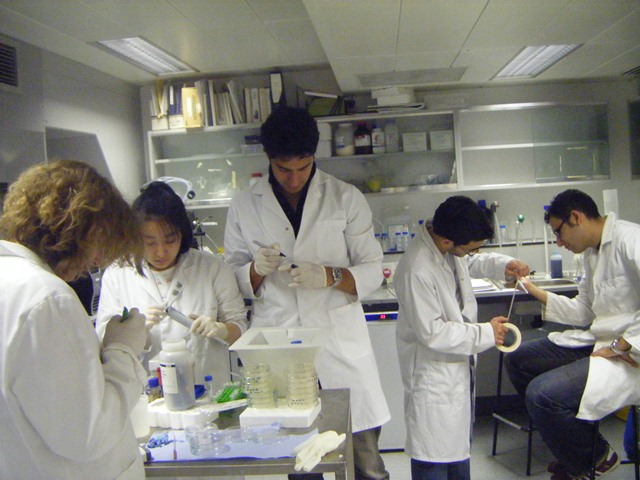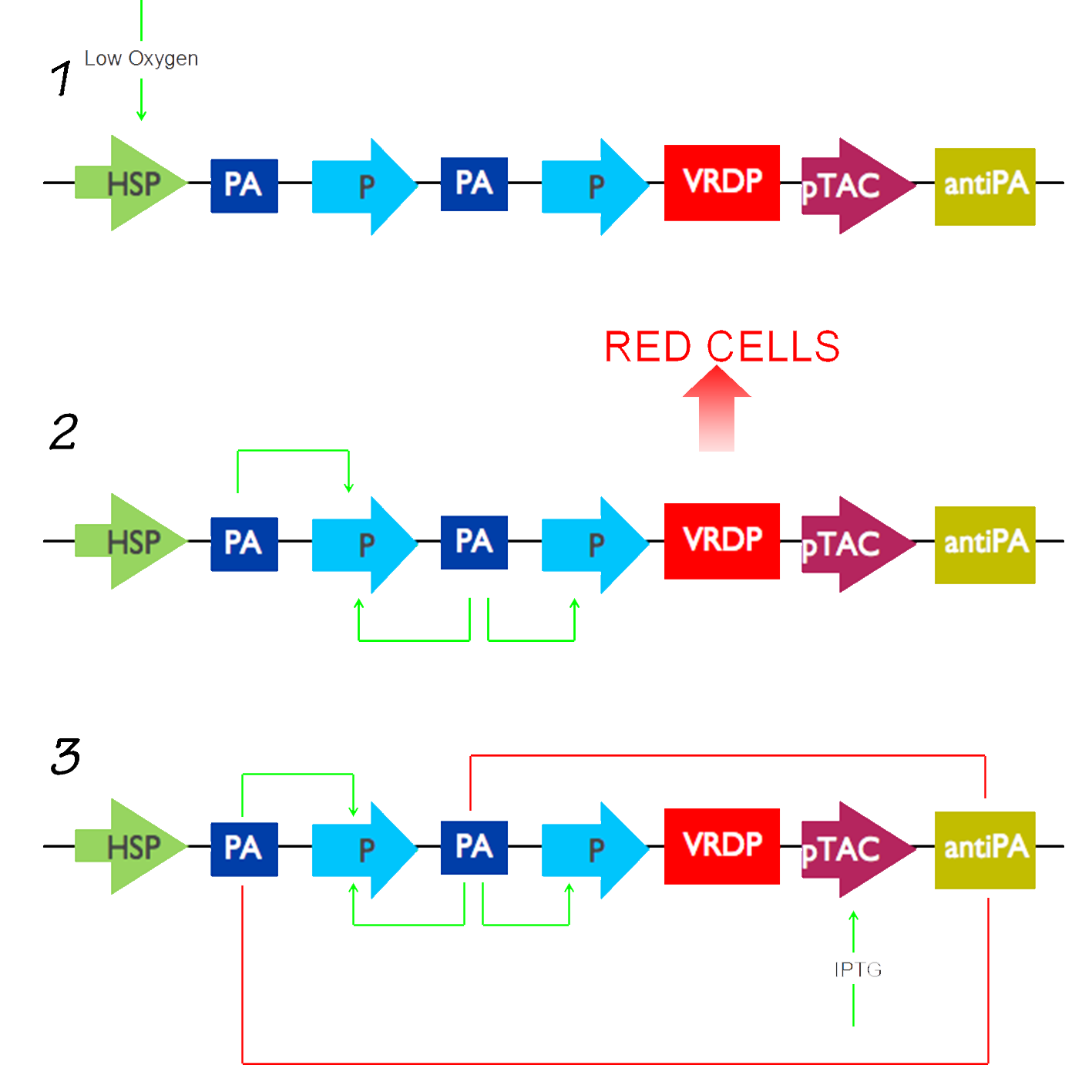Team:UCL London/Project Description
From 2010.igem.org
Project Hypoxon
Project Abstract
UCL’s Biochemical engineering department has been at the forefront of biopharmaceutical manufacture for years. Extraordinary advances in the life sciences have great potential to improve our quality of life through better medicines and a cleaner environment.
Our project aims to create “independent” cells, capable of self-induction into the production phase, without the introduction of any chemical into the closed system. By exploiting genetically modified E.coli to respond to hypoxia, we eliminate the need of IPTG induction. The functioning genetic circuit would be signalled by the production of a fluorescent green dye.
While the green dye can be used as a live monitoring technique for oxygen, replacing the green dye gene with pharmaceutical protein promises higher yields and more consistent batches which is a step closer to providing cheaper healthcare to everyone.
Project Description
During the initial phase of the fermentation process, the recombinant E.coli cells with our genetic circuit will grow very slow at first, and this initial phase is referred to as the "Log Phase". As this happens, the DOT(Dissolved Oxygen Tension) in the fermenter decreases, at a rate which is indirectly proportional to the rate of cellular growth. The DOT will continue to fall untill it falls in the region of 15-20%. Now usually during protein expression in E.coli clls lacking our genetic circuit, this is the point at which our inducer IPTG would be added manually resulting in the lacI repressser being repressed itself and thus allowing our hybrid pTAC to be expressed thus allowed the desired protein to be expressed. However, bearing in mind the DOT, we will use this unique factor to introduce hypoxia into our circuit. Essentilly, our circuit will start of with an HSP, Hypoxia Sensitive Promoter, which will detect the change in DOT when it falls belew the threshold of 20%. At that point, it will be triggered and will activate a positive feedback loop consisting of 2 promoter Activators and 2 Promoters in the following format;
The promoter activator activates the promoter, which then activates another promoter activator and thus produces more of the promoter. This is essential as it increases the rate of protein expression. With this being activated, the VRDP, which is our red dye protein, it too will be activated subsequently resulting in the expression of our red dye protein indicating the succesful operation of our circuit.In our circuit for the sake of proof of principle, instead of expressing a typical protein, we will introduce a genetic sequence which translates a fluorescent red protein so that once it is translated, it will secrete the red dye and hence prove that our circuit does in actual fact work and added an artistic touch to our project.
The pTAC here no longer serves the purpose of being our expression system, it now serves the purpose of commencing the switch off of our circuit. This will happen by addition of IPTG which will result in the pTAC no longer being repressed. This will allow the activation of the pTAC which will activate the consecutive antiPA gene resulting in repression of the promoter activators and hence the switching off of our genetic circuit. Now in biopharmaceutical production, this extra sequence consisting of the pTAC and the antiPA is not required since there is no need to switch the genetic circuit of and so will allow maximum protein expression. But in this project, we feel it is essential to provide a mechanism for its closure, a genuine rule of thumb in Synthetic biology.


 "
"





 Twitter
Twitter Facebook
Facebook UCL
UCL Flickr
Flickr YouTube
YouTube